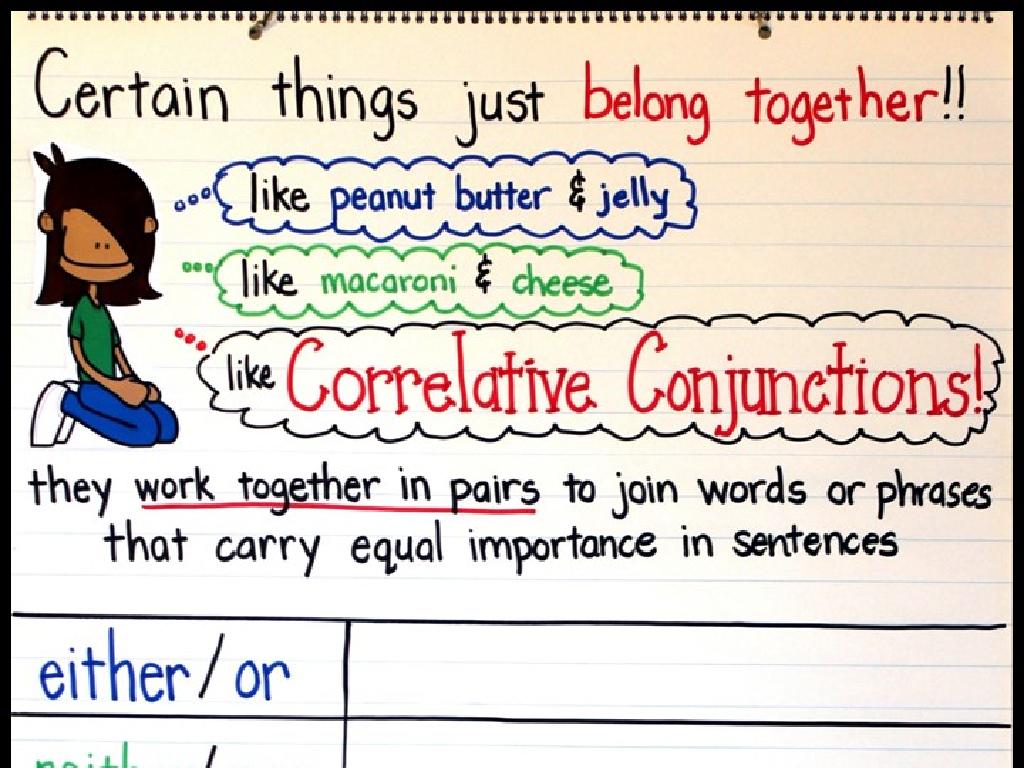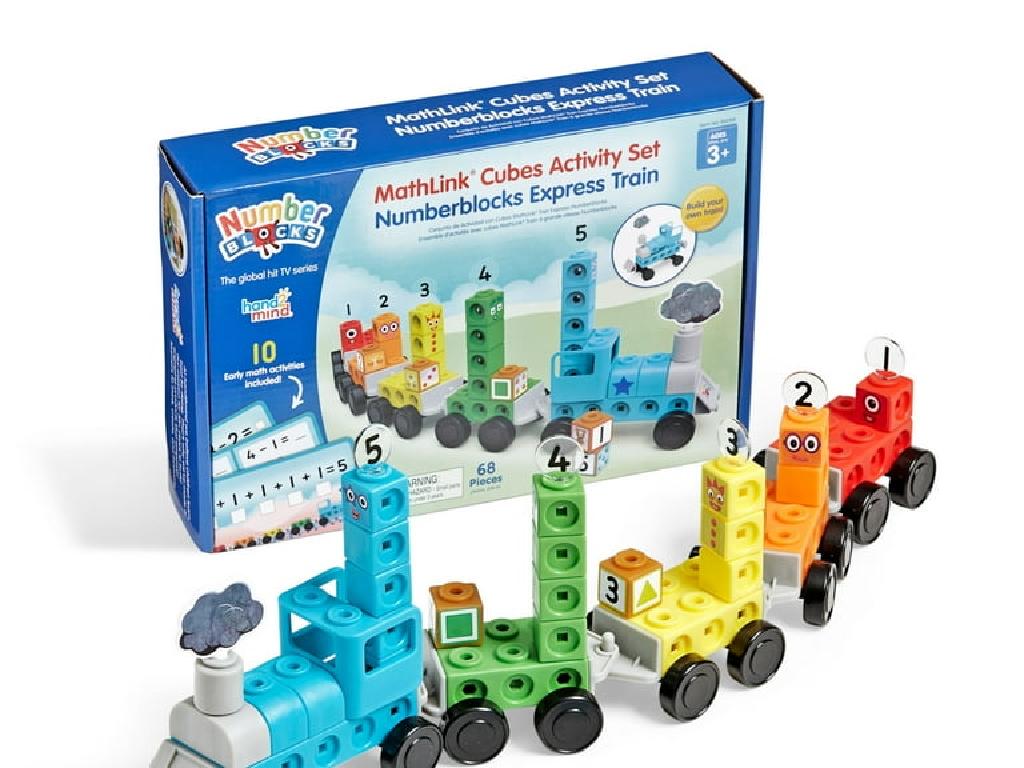Solve Percent Problems Using Strip Models
Subject: Math
Grade: Sixth grade
Topic: Percents Of Numbers
Please LOG IN to download the presentation. Access is available to registered users only.
View More Content
Welcome to Percents!
– Understanding Percents
– Percents represent parts of a hundred, like 25% is 25 out of 100.
– Percents in daily life
– Used in sales tax, discounts, and statistics.
– Fractions, Decimals, Percents
– 1/2 is 0.50 and also 50%.
– Strip Model Method
– Visual way to solve percent problems using bars.
|
This slide introduces students to the concept of percents and their relevance in everyday life. Begin by explaining that percents are another way to express fractions and decimals, and they are used frequently in various real-world situations such as calculating discounts, determining sales tax, and understanding statistics. Show how to convert between fractions, decimals, and percents to help students see the connections between them. Introduce the strip model method as a visual tool to help solve percent problems, which can be particularly helpful for visual learners. Encourage students to think of percents as parts of a whole to aid in understanding. Provide examples of each conversion and use a strip model to demonstrate how to find a certain percentage of a number.
Understanding Percents with Strip Models
– Define percent: ‘Per Hundred’
– A percent represents a part out of 100, like 50% is 50 out of 100.
– Percent in daily life
– Examples: Sales tax, discounts, and nutrition labels.
– 100% equals a whole
– If a pizza is 100% whole, then half a pizza is 50%.
– Using strip models for percents
– Visualize percents by dividing strips into 100 equal parts.
|
Begin by explaining that ‘percent’ means ‘per hundred’ and is a way to express fractions where the denominator is 100. Relate percents to everyday situations like shopping discounts or nutrition facts to make the concept more tangible for students. Clarify that 100% represents a whole item, using a pizza as a relatable example. Introduce strip models as a tool to help visualize percents by dividing a strip into 100 equal parts, which can represent the whole. This visual aid is particularly effective in helping students grasp the concept of percents in a concrete manner.
Relating Percents to Fractions and Decimals
– Understand 50% equals 1/2 and 0.5
– Convert fractions to percents
– To convert, multiply the fraction by 100 and add a % sign
– Convert decimals to percents
– To convert, multiply the decimal by 100 and add a % sign
– Practice with examples
– Use strip models to visualize the conversions
|
This slide aims to help students make connections between percents, fractions, and decimals. Start by explaining that 50% is another way of expressing 1/2 or 0.5. Then, demonstrate how to convert fractions to percents by multiplying by 100 and attaching a percent sign. Similarly, show the conversion of decimals to percents. Use strip models to provide a visual representation of these concepts, which can be particularly helpful for visual learners. Encourage students to practice with different fractions and decimals to become comfortable with these conversions. Provide several examples and possibly a class activity where students can work on these conversions in groups or individually.
Understanding Percents with Strip Models
– What is a strip model?
– A strip model represents 100% as a whole bar divided into equal parts.
– Visualizing percents with strips
– Each part of the strip shows a percentage of the whole.
– Examples: Strip models for percents
– 25% as 1/4 of the strip, 50% as half, and 75% as 3/4 of the strip.
– Practice with your own examples
– Try creating strip models for 10%, 20%, and 50%.
|
This slide introduces strip models as a tool for understanding percents. A strip model is a visual representation that helps students grasp the concept of percentages by dividing a bar into equal parts. It’s crucial to explain that the whole bar represents 100%, and each divided part represents a portion of that 100%. Provide clear examples, such as a bar divided into four parts where each part is 25%, to illustrate different percentages. Encourage students to draw their own strip models for various percentages as a hands-on activity to reinforce the concept. This visual approach aids in making abstract percentage problems more concrete and understandable.
Solving Percent Problems with Strip Models
– Identify the whole in a model
The whole is the total length of the strip model.
– Determine the percent in a model
The percent is a section of the strip model.
– Find the part from the percent
Calculate the part of the whole that the percent represents.
– Practice with real examples
Use examples like finding 25% of $20 or 10% of 50 apples.
|
This slide introduces students to the concept of using strip models to solve percent problems, which is a visual way to understand percentages. Start by explaining that the whole strip represents 100% or the total amount. Then, show how to determine what percentage a section of the strip model represents. Next, teach students how to find the actual quantity that a certain percentage stands for. Provide real-life examples to help solidify their understanding, such as calculating discounts or determining what fraction of a class voted for a certain option. Encourage students to draw their own strip models and label the parts to practice this concept.
Class Activity: Solving Percent Problems
– Solve percent problems together
– Apply knowledge to real-world scenarios
– For example, finding 20% of a $50 bill
– Collaborate on class problems
– Work in groups to encourage discussion
– Discuss solutions and methods
– Share different approaches to solving problems
|
This slide is designed to engage students in a collaborative class activity where they will apply their understanding of percent problems using strip models. Start by solving a problem together as a class to demonstrate the process. Then, present real-world scenarios such as calculating discounts during shopping or sales tax on purchases to make the activity relatable. Encourage students to work in small groups to solve additional problems, fostering a collaborative learning environment. Conclude by discussing the various methods and solutions presented by the groups, highlighting different strategies to find percentages. This activity will reinforce their learning and enhance problem-solving skills.
Class Activity: Create Your Own Strip Model
– Choose a percent problem
– Draw and solve your strip model
– Divide a strip into 100 units to represent the whole
– Explain your model’s solution
– Show the percent as a part of the strip, solve for the value
– Share with the class
|
This activity is designed to help students visualize percent problems using strip models, which are a great tool for understanding the concept of percentages. Students should pick a percent problem, such as finding 20% of 50. They will then draw a strip and divide it into 100 equal parts, shading in the percentage they are solving for. After calculating the value, students will explain how they solved the problem using their model. Encourage creativity in their representations and ensure they understand the correlation between the model and the mathematical concept. Possible variations for different students could include finding discounts, calculating tax, or determining percentage increases or decreases.
Review and Reflection: Percent Problems
– Recap on strip models
– We learned to visualize percent problems using strip models.
– Applying knowledge in real life
– Consider how sales tax or discounts at a store are calculated using percents.
– Addressing questions
– Clarifying doubts
|
Today’s lesson focused on understanding and solving percent problems using strip models, which are visual tools that help students grasp the concept of percentages in a more intuitive way. We discussed how this method can simplify complex percentage calculations and make them more relatable. Students should now be able to apply this knowledge to real-world scenarios, such as calculating discounts during shopping or determining the percentage of ingredients in a recipe. Encourage students to think of other examples where percentages are used in everyday life. The end of the session is dedicated to addressing any questions students may have and clarifying any part of the lesson that was not understood fully. This reflection time is crucial for solidifying their understanding and preparing them for future lessons on percentages.





